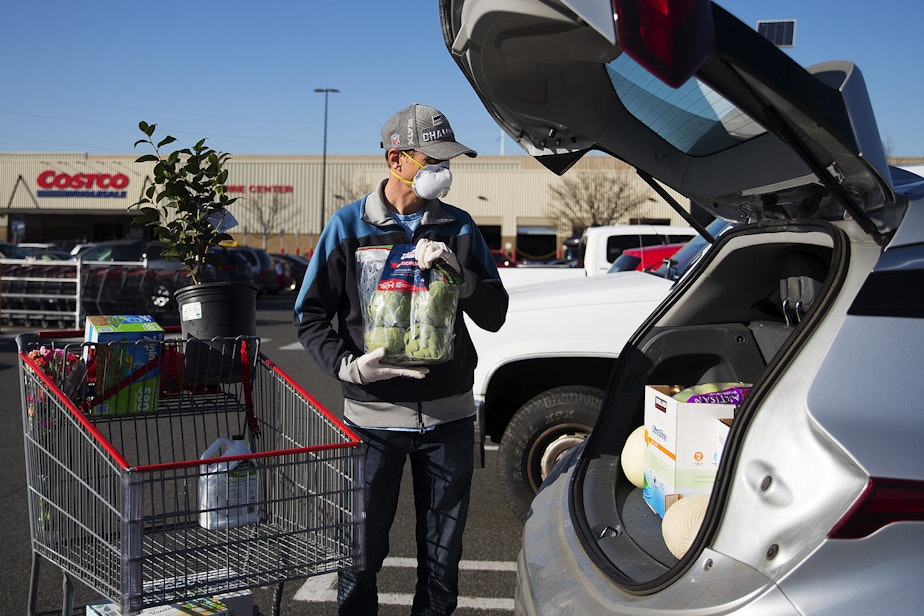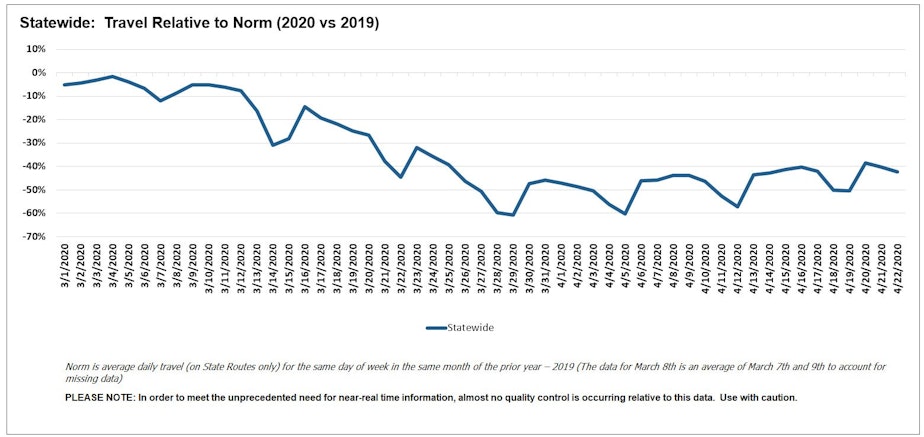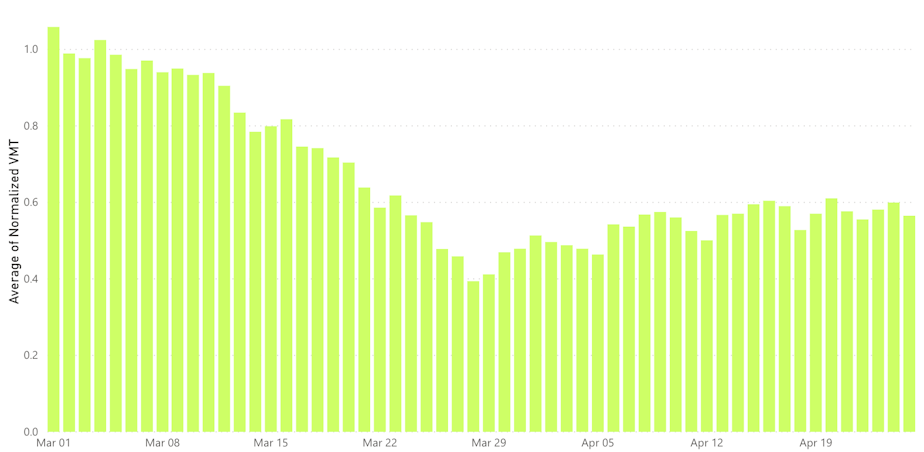Driving starts to bounce back after pandemic-driven collapse. Too soon?

More Washingtonians have been getting behind the wheel in recent weeks.
The gradual rise in driving comes after a drastic 50% drop in March with the onset of the coronavirus pandemic and Gov. Jay Inslee’s “Stay Home, Stay Healthy” order.
“I worry that people are getting restless,” translator Lola Rogers of Seattle said. “That must be why they're in their cars.”
Rogers has noticed increasing traffic where she lives in Capitol Hill.
“It is hard to do,” Rogers said of hunkering down at home. “I worry that some people might have a hard time keeping it up, which would be a real problem.”
“I was trying to frequent the stores as little as possible in the beginning, but I’m getting out more to buy fresh produce for cooking,” Amanda Loewen of Sumner commented on Facebook. She said she’s still just shopping once a week instead of her normal three days a week.
Sponsored
Photos: Drive-through confessions during a pandemic
“I'm really trying my best to follow the rules, but I just need to get out,” fitness instructor and tech writer Cici Kent of South Everett said.
“Since the beginning of March it's been me at home basically by myself,” she said. “Just me and my dog.”
Kent said she takes the governor’s order seriously.
“In order to honor the governor's social distancing guidelines and not get out of my car but still get outside, I go for a drive.”
Sponsored
Kent said she doesn’t feel safe walking in her own neighborhood, so she’ll drive without leaving her car for a change of scenery.
“On the weekends I run out of things to do, and a drive usually kind of helps me shake off that funk,” she said. “I can only fold so much laundry and vacuum so many times, right?”
Kent said she drives to get groceries about once a week, early in the morning to avoid crowds, and wears a mask and “lunch lady” gloves when she does.

Sponsored
Statewide, more people are logging more miles than in late March, though the reasons are not entirely clear.
By mid-April, “vehicle miles traveled” statewide had bounced back to about 60% of normal, according to the Washington State Department of Transportation.
WSDOT's data is obtained by 175 vehicle-counting sensors buried beneath roads around the state. The agency’s data is preliminary and comes with the unusually frank warning, “To meet the unprecedented need for near-real time information, almost no quality control is occurring relative to this data. Use with caution.”
Separately, Google uses data from drivers’ electronic devices to capture anonymized data about travel destinations but, as of Thursday morning, had only published data up to April 11 for Washington.
“We virtually forced many people to go to telework,” WSDOT data manager Natarajan Janarthanan said. “I don't know if people are losing patience.”
Sponsored
Some 27,000 Boeing machinists resumed working and commuting on April 20. Yet WSDOT data shows a similar rebound of traffic volumes around the state, not just near cities with Boeing facilities.
“Commuting really hasn’t had much impact,” said Mark Burfeind, a spokesperson for Kirkland-based INRIX.
The transportation analytics firm’s data, compiled from location information from drivers’ phones and other devices, as well as WSDOT data, corroborates the agency’s preliminary numbers.

“I think most people are getting more comfortable on their personal trips, whether it’s errands or going to places like parks and being outside,” Burfeind said, though he said he did not have hard data to back that up.
“The governor's "Stay Home, Stay Healthy" order is really about people staying at home and staying away from other people,” Kathy Lofy, the state’s chief medical officer, told KUOW’s Seattle Now podcast. “This is what we all really need to try to stick with at this point.”
Sponsored
Gov. Inslee said on Wednesday he would extend the stay-home order beyond May 4, though he did not specify how much longer he would do so.
Public Health -- Seattle & King County declined to comment on the travel trends. A spokesperson instead referred to a document the agency had published on April 10 on “the danger of prematurely relaxing social distancing.”




